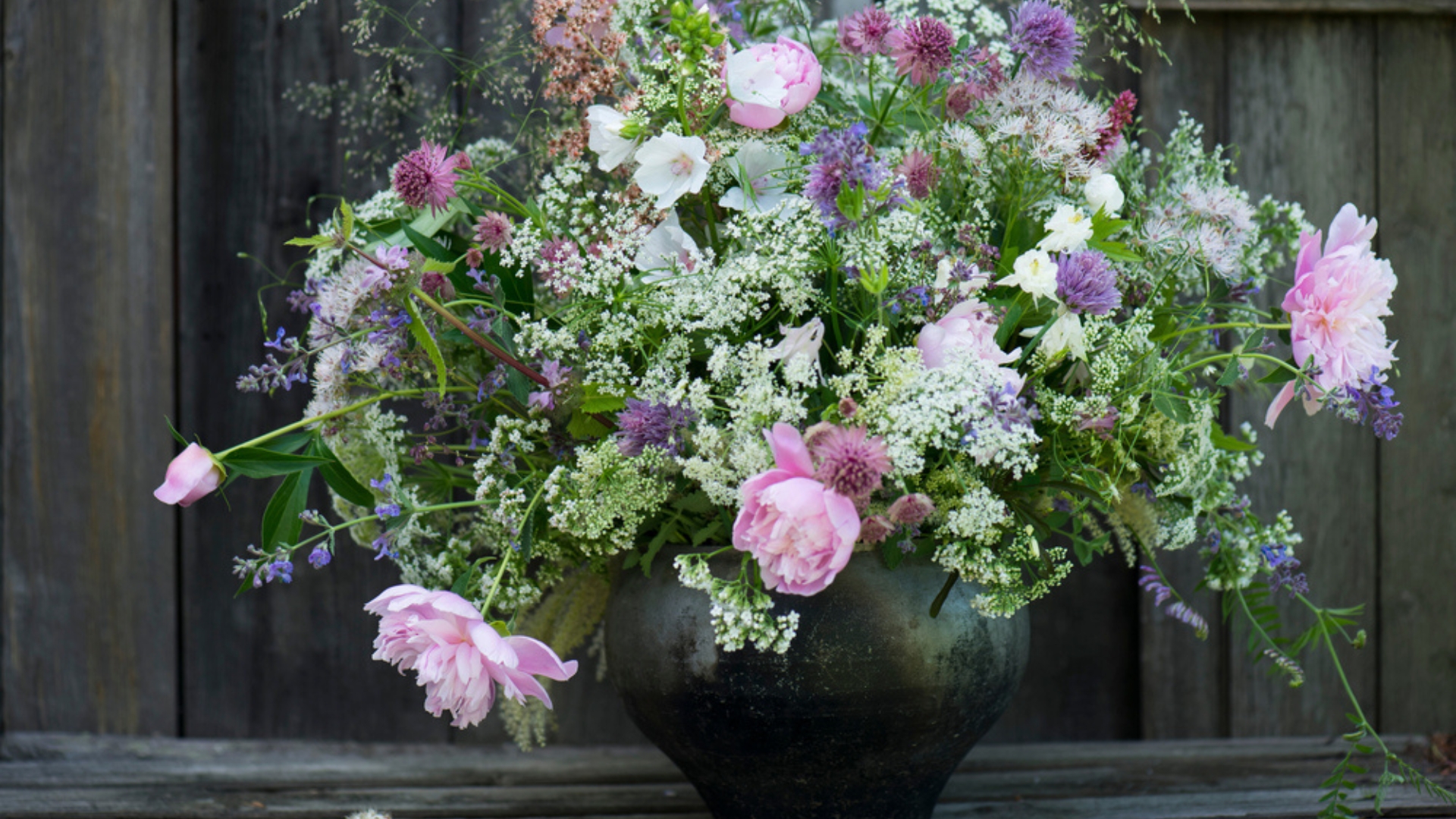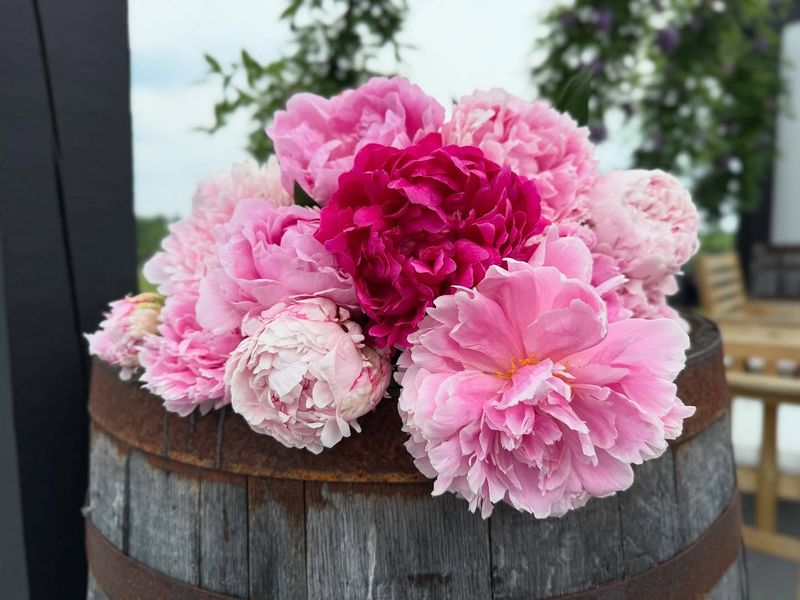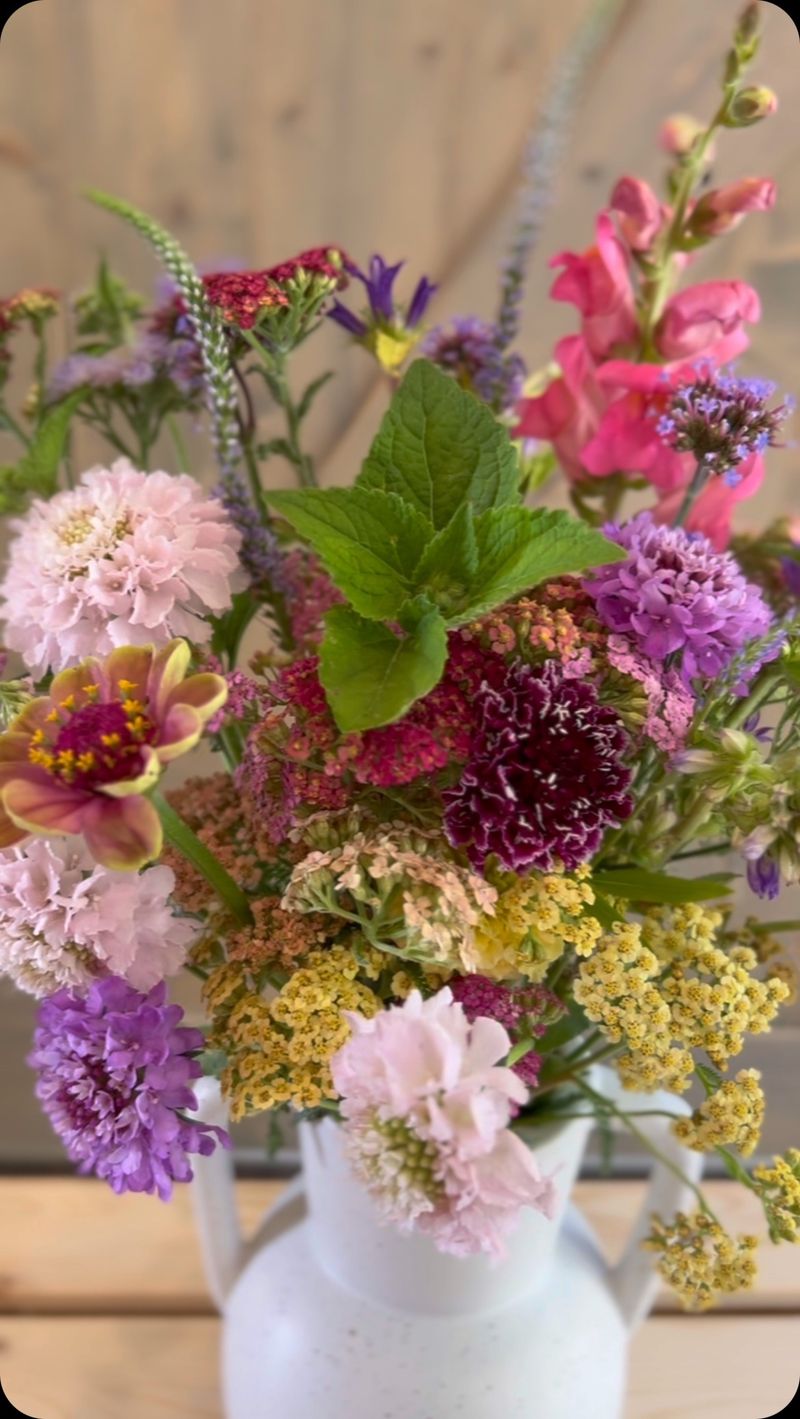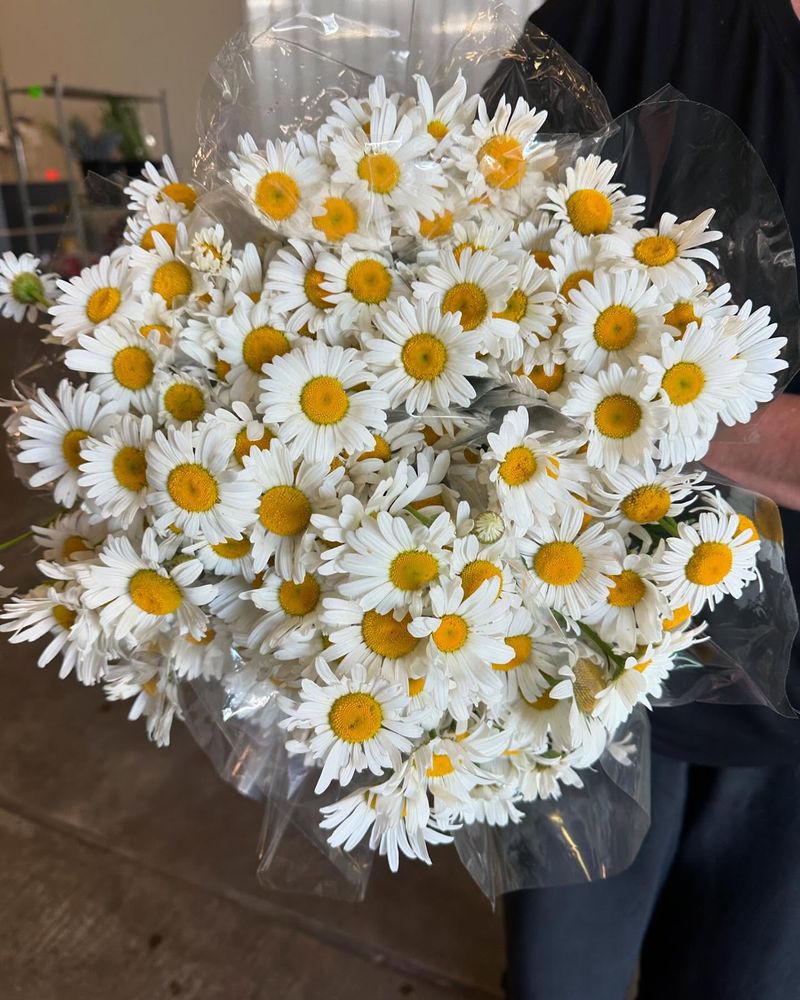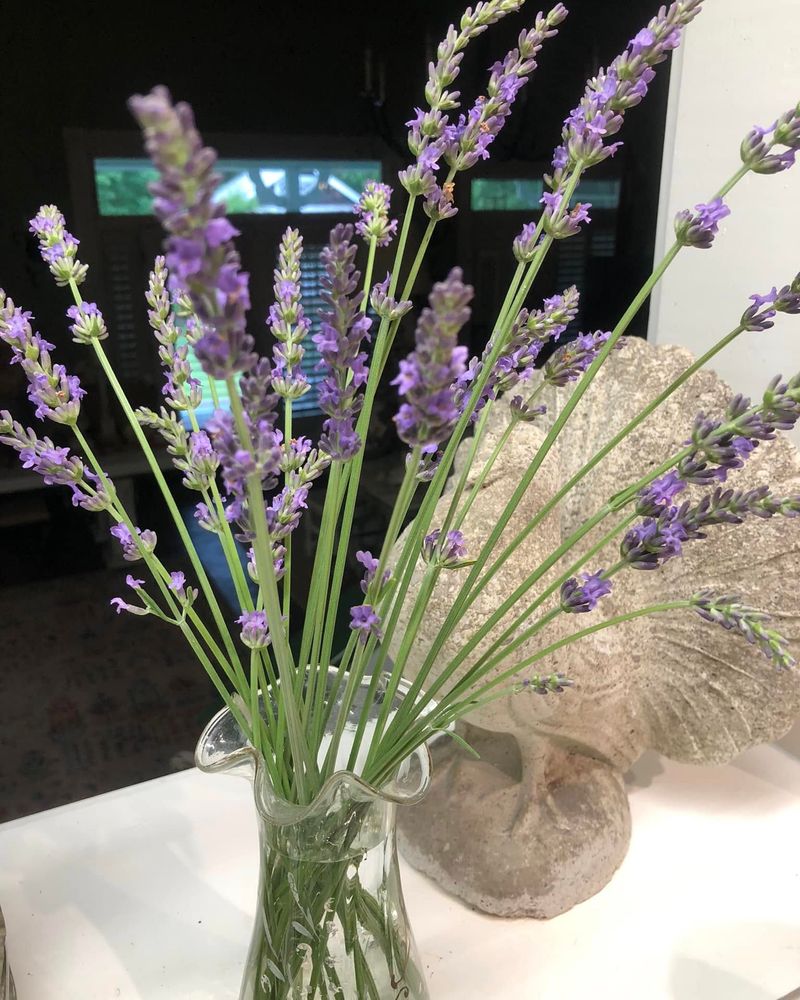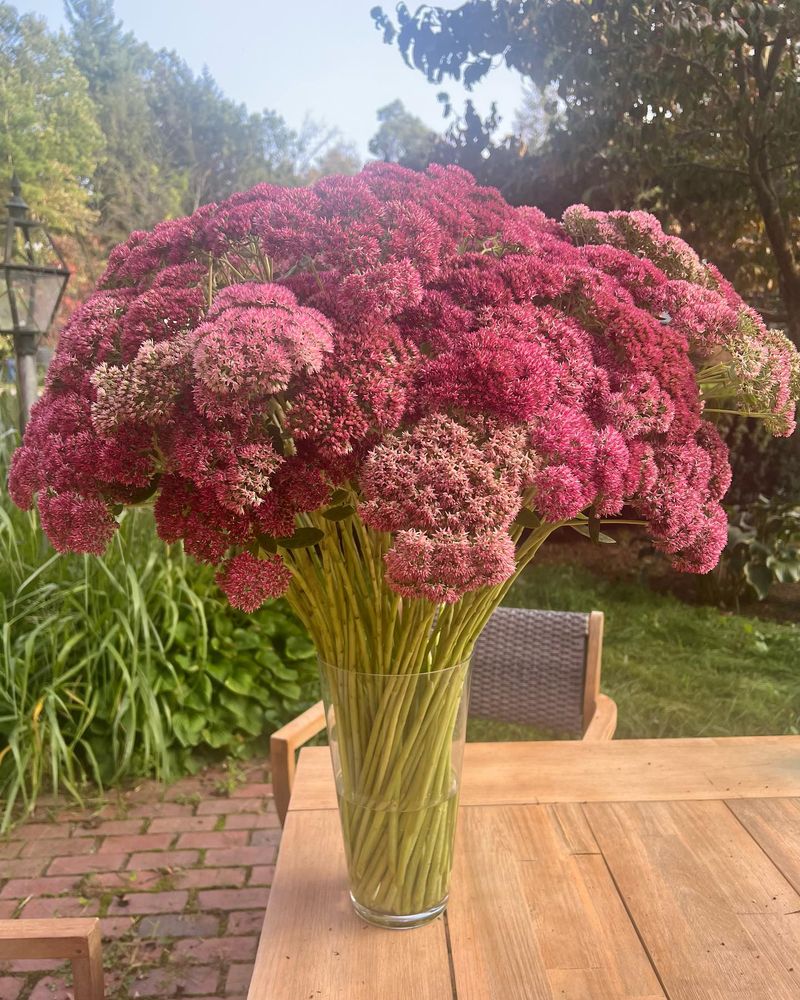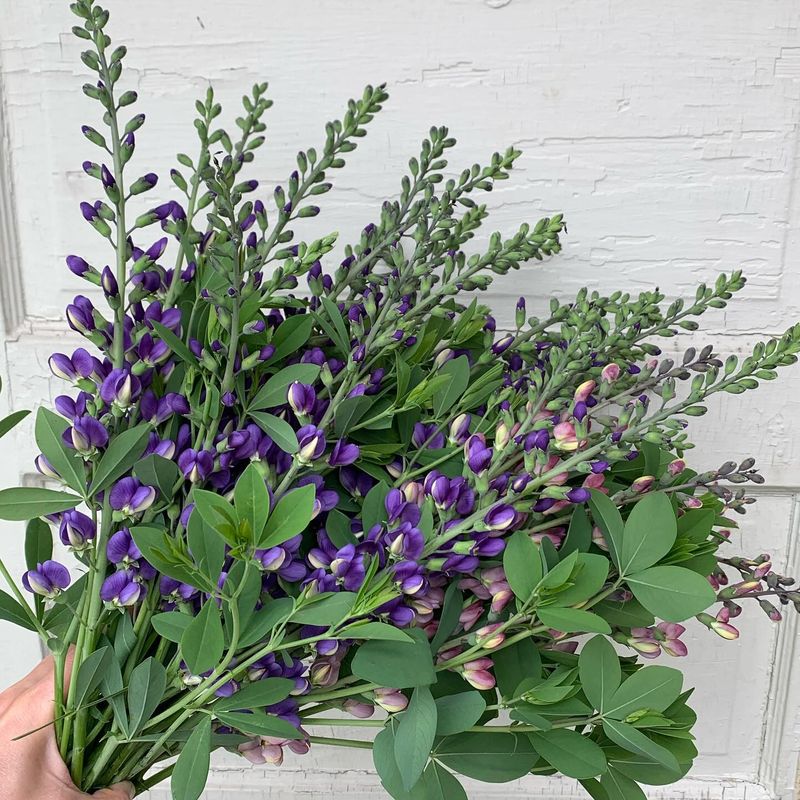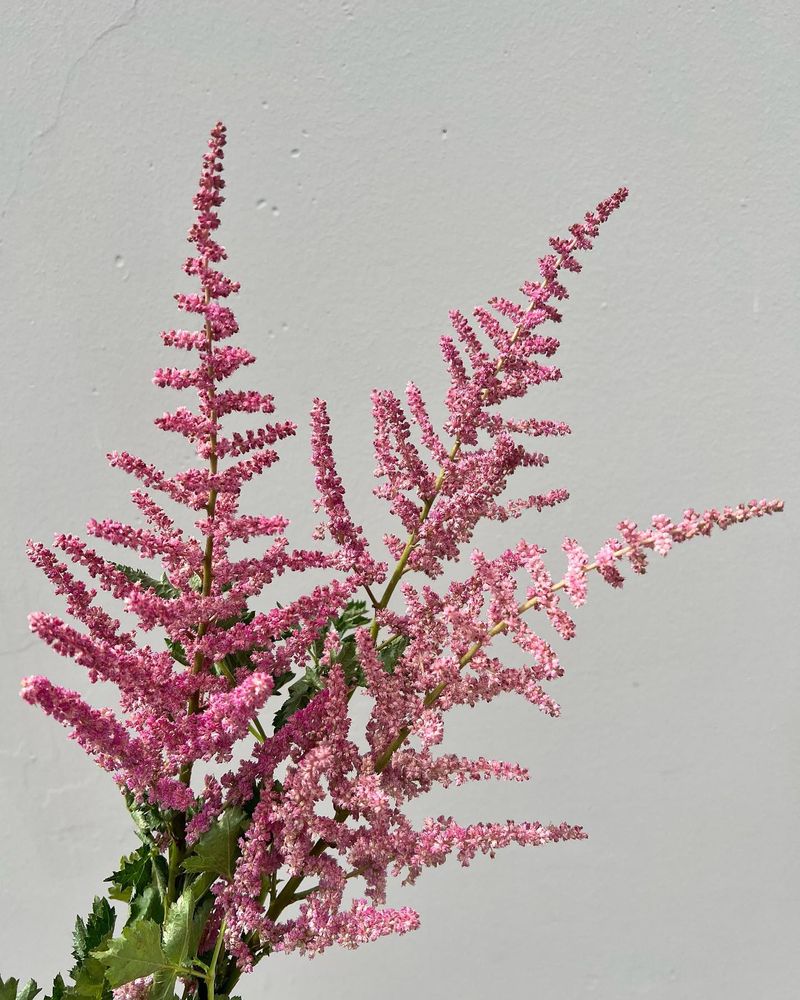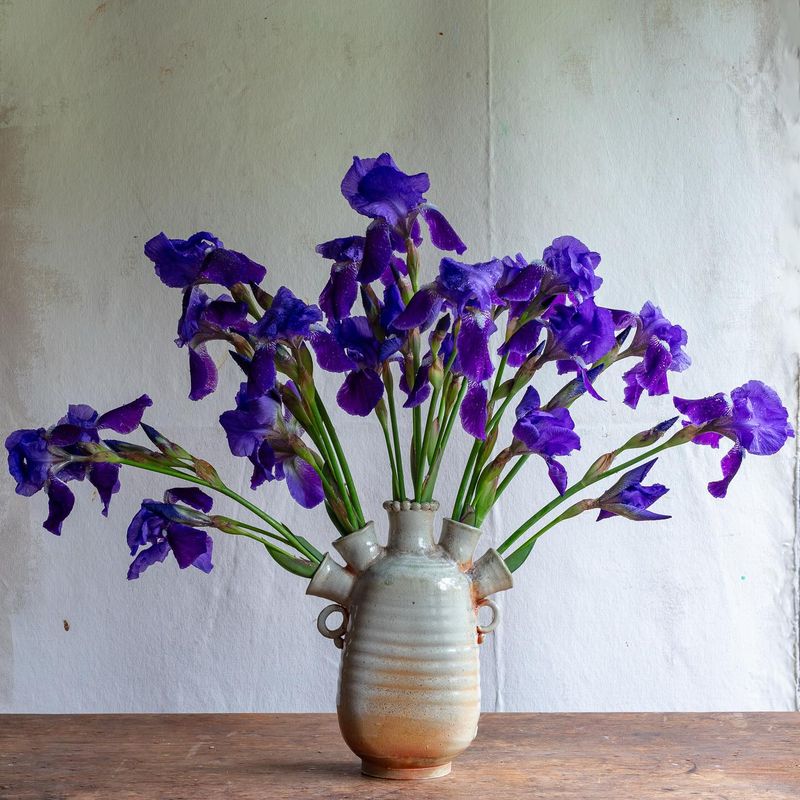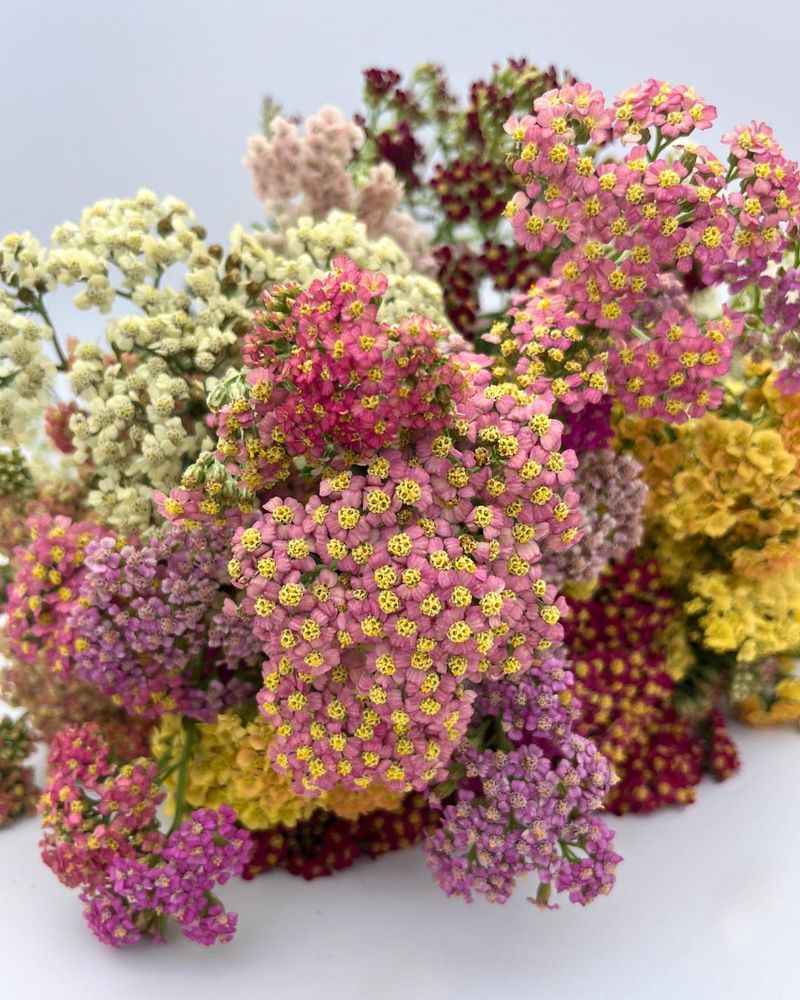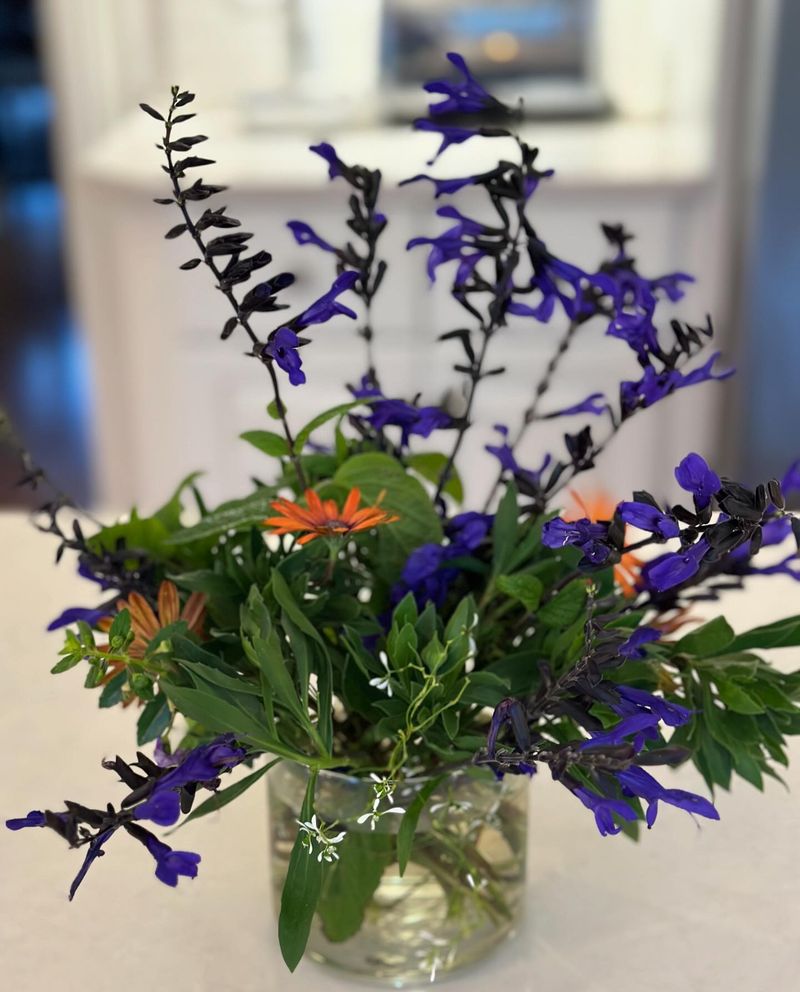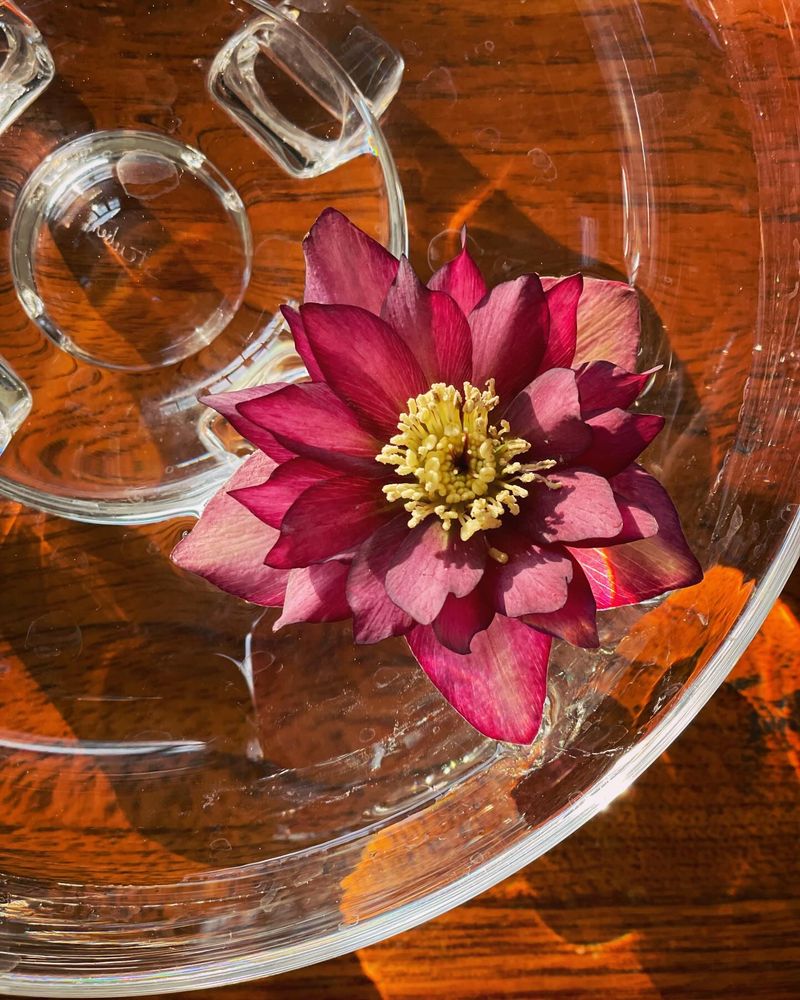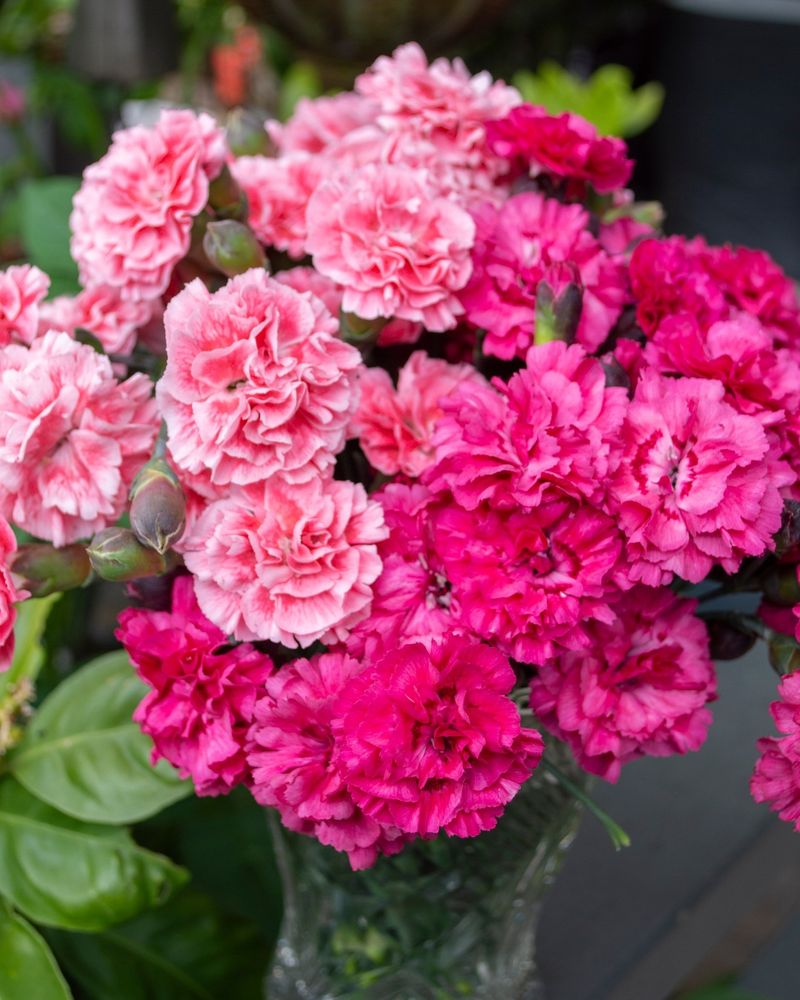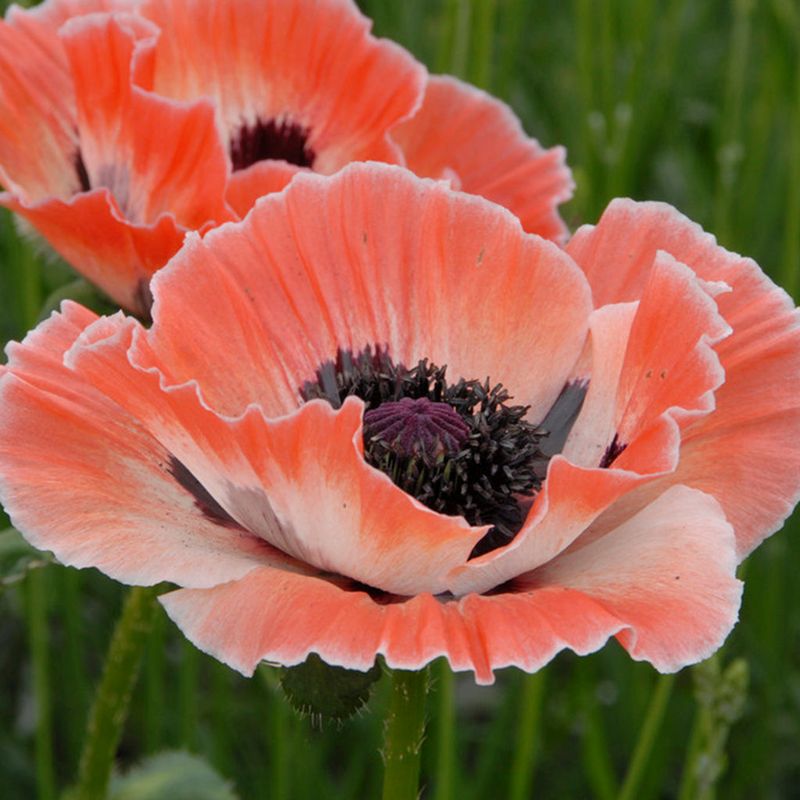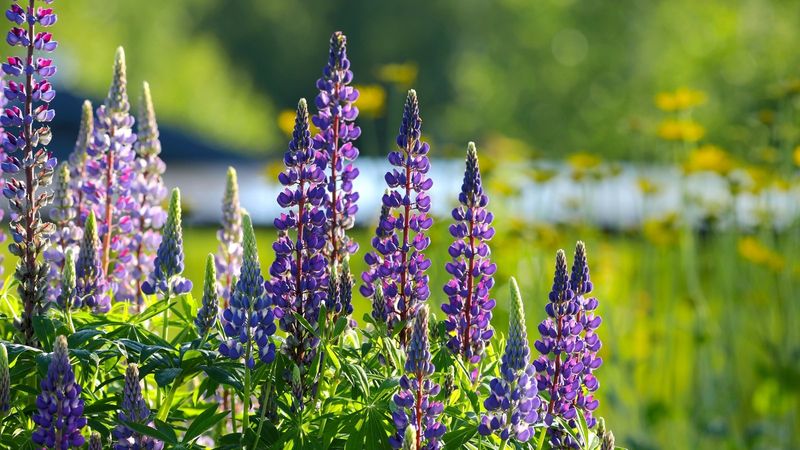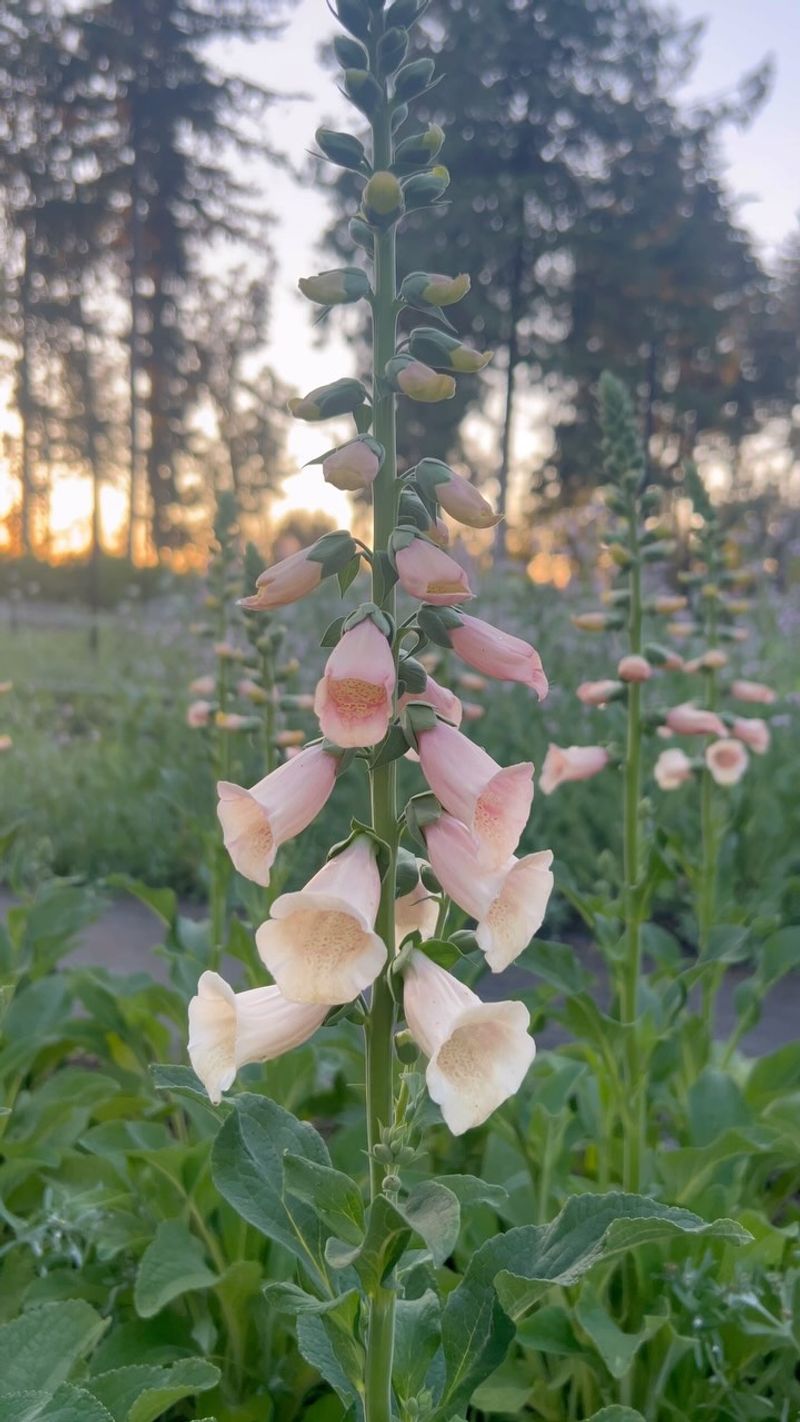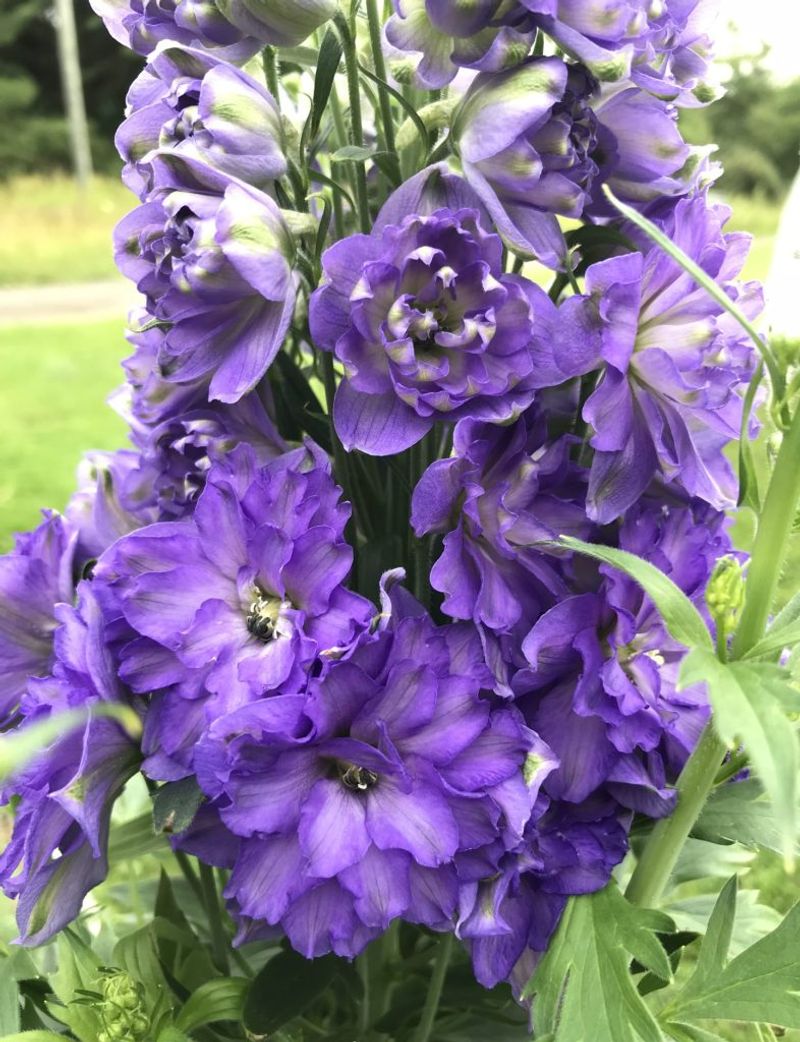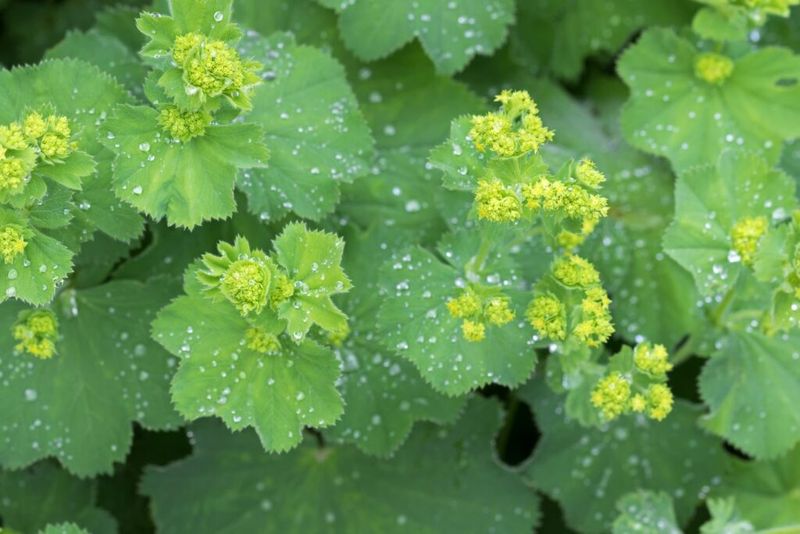Want a vase full of garden-fresh wow without the wilt? Not all blooms are cut out for cut flowers. Some stay picture-perfect long after snipping, while others droop faster than you can say centerpiece.
Before you start chopping down your flower beds, find out which perennials are stars in a vase—and which ones flop the moment the scissors come out.
1. Peonies – The Showstopping Stunners
Fluffy, fragrant peonies reign supreme in the cut flower world. When harvested as tight buds showing a hint of color, they’ll unfurl dramatically in your vase over several days.
For longest vase life, cut peonies in early morning when stems are full of water. Remove any ants hitchhiking on the buds with a gentle rinse. Change vase water every two days, and these beauties will reward you with up to 10 days of glory indoors.
2. Yarrow – The Long-Lasting Wonder
Hardy yarrow produces flat-topped flower clusters in shades from sunny yellow to deep red that hold their color beautifully when cut. The sturdy stems stand at attention in arrangements without flopping.
Cut yarrow when flowers are fully open for maximum staying power. As a bonus, these blooms dry naturally in the vase, transforming your fresh arrangement into a dried one that lasts for months. Their feathery foliage adds delicate texture to mixed bouquets.
3. Coneflowers – Cheerful and Resilient
Beloved by butterflies in the garden, coneflowers (echinacea) bring their cheerful daisy-like blooms indoors with equal success. Their stiff stems and slow-drinking nature make them perfect cut flowers.
Harvest when petals are just fully opened but before the center cone begins dropping pollen. Strip lower leaves to keep water clean. Modern varieties come in sunset hues from orange to raspberry, expanding beyond the traditional purple. They’ll brighten your table for 7-10 days.
4. Shasta Daisies – Classic Cottage Charm
Cheerful white petals surrounding golden centers make Shasta daisies a timeless addition to summer bouquets. Their straight, sturdy stems hold up beautifully in arrangements without drooping.
For maximum vase life, cut these beauties when the petals have just fully opened. A splash of lemon juice in the vase water helps them stay fresh longer. Mix with blue delphinium or purple salvia for a stunning contrast that brings cottage garden vibes to your indoor space.
5. Lavender – Fragrant and Fabulous
Lavender’s silvery-purple spikes bring intoxicating fragrance to cut arrangements. The sturdy stems stand tall in vases, while their soothing scent fills the room.
Harvest lavender when about half the tiny florets on each spike have opened for maximum fragrance and longevity. Don’t place in direct sunlight, which can cause the color to fade quickly. As the stems dry naturally in the vase, the scent intensifies, making lavender a flower that keeps on giving.
6. Rudbeckia (Black-Eyed Susans) – Sunny Disposition
Black-eyed Susans bring sunshine indoors with their golden petals and distinctive dark centers. These cheerful native flowers last remarkably well when cut, often staying perky for over a week.
Cut stems when flowers have just fully opened but before the center cone releases pollen. Morning harvesting yields the longest vase life. Their bright color pairs beautifully with purple coneflowers or blue bachelor buttons for a wildflower look that brightens any room.
7. Sedum – Sculptural and Steadfast
Sedum’s succulent-like qualities make it exceptionally long-lasting as a cut flower. The star-shaped clusters transform from pale green to deep rose as they mature, adding architectural interest to arrangements.
Harvest when the flower heads have developed good color but before they’ve fully darkened. The thick stems benefit from a vertical slice at the bottom to increase water uptake. Sedum continues to develop in the vase, often lasting two weeks or more and drying beautifully for extended enjoyment.
8. Baptisia (False Indigo) – Elegant Spires
Baptisia’s lupine-like spires in blues, purples, or yellows bring vertical drama to arrangements. The pea-like flowers clustered along tall stems create elegant lines in bouquets.
Cut when one-third to one-half of the flowers on each spike have opened. Baptisia’s bluish-green foliage adds beautiful contrast and stays fresh nearly as long as the flowers themselves. For maximum vase life, recut stems underwater to prevent air bubbles from blocking water uptake.
9. Astilbe – Feathery Plumes
Astilbe’s feathery plumes in shades from white to deep raspberry add airy texture and movement to arrangements. Their fluffy appearance belies their surprising durability as cut flowers.
Harvest when the plumes are fully developed but still fresh-looking. A floral preservative significantly extends their vase life. The fern-like foliage remains attractive in water, so include some leaves with your cut stems for added greenery and texture in your bouquets.
10. Bearded Iris – Exotic Elegance
Bearded iris blooms unfurl like living sculptures, revealing intricate details and rich colors from deepest purple to delicate pastels. Their exotic form makes them statement pieces in arrangements.
Cut iris stems when the buds are showing color but still tightly furled. Each stem typically has multiple buds that will open in succession, extending the display. Keep water level shallow – just 3-4 inches – as iris stems can rot if submerged too deeply.
11. Achillea (Yarrow) – Colorful Clusters
Achillea’s flat-topped flower clusters create horizontal planes that balance taller elements in arrangements. Modern varieties offer stunning colors from soft peach to deep ruby red.
Cut when flowers are fully open but still fresh-looking. The sturdy stems rarely need support in arrangements. Achillea gradually dries in the vase while maintaining its color, transitioning seamlessly from fresh to dried arrangement. Remove leaves below the waterline to prevent decay.
12. Salvia – Spiky Sophistication
Salvia’s vertical spikes in vibrant blues, purples, and reds create dramatic lines in arrangements. The tubular flowers, beloved by hummingbirds in the garden, bring architectural interest indoors.
Harvest when about one-third to one-half of the flowers on each spike have opened. Remove all foliage that would sit below the waterline. Salvia’s strong stems rarely flop in arrangements, making them reliable vertical accents that last up to a week in fresh water.
13. Hellebores – Winter’s Gift
Hellebores bloom when little else does, offering rose-like flowers in shades from pure white to deep burgundy. Their nodding heads floating in shallow dishes make elegant tabletop displays.
For longest vase life, cut mature flowers that have dropped their stamens. Searing the cut ends with boiling water prevents sap from clogging stems. Float individual blooms in small bowls for an elegant display that showcases their intricate centers and subtle coloration.
14. Dianthus – Sweet and Long-Lasting
Perennial dianthus brings spicy clove fragrance and ruffled blooms to arrangements. Their petite size makes them perfect fillers among larger flowers, adding texture and often a sweet scent.
Cut when flowers are fully open but still fresh. The slender stems benefit from a floral preservative to extend vase life. Modern varieties offer expanded color options beyond traditional pinks, including corals, purples, and bicolors with patterned petals that add visual interest to bouquets.
15. Poppies – Gorgeous But Finicky
Oriental poppies dazzle with their tissue-paper petals and dramatic centers, but require special handling as cut flowers. Without proper preparation, they’ll collapse within hours of cutting.
The secret: harvest when buds are cracking open but still tight, showing just a hint of color. Immediately sear stem ends with a flame or dip in boiling water for 30 seconds. Despite these efforts, expect only 2-3 days of vase life. Their extraordinary beauty makes even this brief show worthwhile.
16. Lupines – Tower Trouble
Lupine’s magnificent spires covered in pea-like flowers create vertical drama in the garden but frustration in the vase. Despite their sturdy appearance, cut lupines typically wilt within hours.
Water uptake issues plague these beauties – stems seal themselves almost immediately after cutting. Even with stem-end crushing and immediate placement in water, lupines rarely last more than a day indoors. Better enjoyed in the landscape where their towering presence can shine without the disappointment of rapid collapse.
17. Foxgloves – Dramatic But Droopy
Foxgloves create spectacular vertical interest in gardens with their tubular, speckled blooms, but quickly disappoint when cut. The tall flower spikes begin drooping within hours despite their robust appearance.
The hollow stems collapse as they struggle to draw up enough water to support the numerous flowers. Even with stem-end cutting underwater and floral preservatives, foxgloves rarely maintain their upright posture for more than a day in arrangements. Their toxicity is another reason to leave these beauties growing in the garden.
18. Delphinium – Stunning But Short-Lived
Delphinium’s soaring spires in heavenly blues, purples, and pinks promise drama in arrangements but deliver disappointment. Despite their sturdy appearance, cut stems begin to fade within a day.
The individual florets shatter easily, creating a messy display of fallen petals around the vase. Even with optimal cutting techniques – early morning harvest and immediate stem-end crushing – delphiniums rarely last more than 2-3 days indoors. Their extraordinary height and color make them garden standouts best enjoyed in their natural setting.
19. Lady’s Mantle – Quickly Collapsing
Lady’s mantle’s chartreuse flower clusters seem promising for arrangements, especially with their scalloped leaves that hold dewdrops like diamonds. Unfortunately, these delicate flowers collapse dramatically after cutting.
Within hours, the airy sprays wilt noticeably despite being placed in water immediately. The leaves fare somewhat better but cannot compensate for the drooping flowers. This perennial performs beautifully as a garden edging but should be admired in place rather than brought indoors for arrangements.

